XJO – Price Target Review
XJO has now traded through the 5520 level and next resistance is 5610.
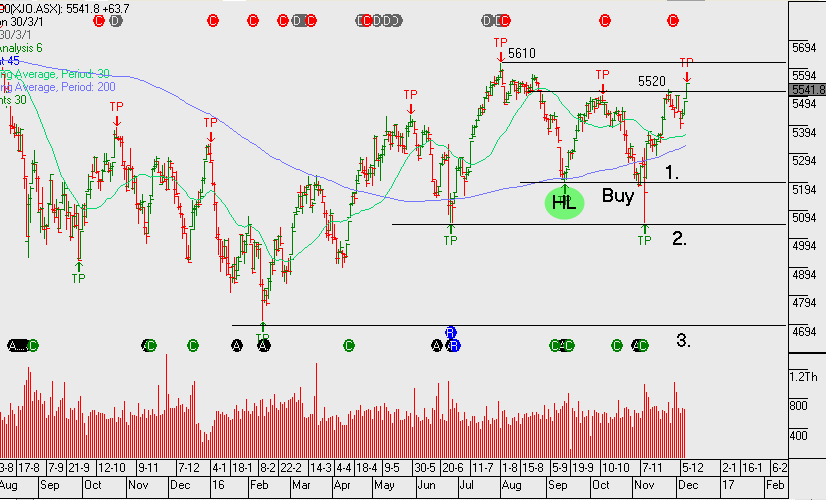
XJO has now traded through the 5520 level and next resistance is 5610.

US and European equities pushed higher as investors showed confidence ahead of today’s key European Central Bank (ECB) meeting in Frankfurt, Germany. All the major indices including the FTSE, DAX, CAC, DOW and SP 500 posted gains in excess of 1.5% on the day.
The ECB is widely expected to announce an extension of its massive Quantitative Easing (QE) stimulus program and may even increase, or expand, the scope of the asset pool to include European corporate bonds and equities.
The ECB has been the most aggressive central bank in providing monetary stimulus this year. Since March, it has been buying €80 billion of assets per month, mainly in the form of Government debt. Although the program is scheduled to expire in March 2017, analysts are expecting at least a six-month extension to be announced today.
As a note of caution, it’s important that ECB chief Mario Draghi rejects any talk about an early tapering of the monthly asset purchases. Just the rumor of a “scaling back” of stimulus before the September ECB meeting sparked a sharp sell-off in G-7 equities and credit markets.
However, with the US FOMC meeting scheduled for next week, our base case is that the ECB statement will not mention tapering and, instead, focus on the technical adjustments to the QE program. On balance we expect this scenario to have a neutral to bullish impact on G-7 equity markets.
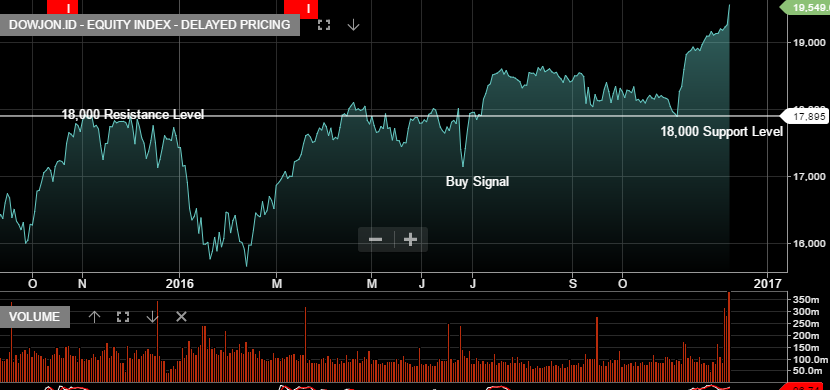
Without a sitting government, it’s difficult to see how there can be any official help for Italy’s beleaguered banking sector. In short, now that the “No” vote has prevailed, Italy’s banking system is for all intents and purposes insolvent.
In addition, the size of Italy’s government debt is also a concern. Depending on which figures you look at, the total outstanding Italian debt is more than €2 trillion, which will have to be serviced even if the Italian voters someday choose to leave the European Union.
On balance we feel that the brunt of the market fallout will be felt across the European Union. However, after the sharp rally in global stocks during the month of November, this referendum news could very well trigger some re-balancing of of financial positions going into the upcoming ECB and the FOMC meetings.

Early results from Italian exit polls suggest voters have overwhelmingly rejected the constitutional reforms proposed by PM Matteo Renzi. He has pledged to resign if the referendum failed to get a “Yes” majority.
Polls from both leading national broadcasters show the “No” vote beating the “Yes” vote by an average of 56% to 43%.
If verified, a defeat of this magnitude could prompt fresh market volatility, especially in the banking sector which has lost almost half its value this year on the Milan bourse, hit by fears over its huge exposure to bad loans accumulated during years of economic downturn.
In early Asian trade, the EUR/USD is over 1% lower at 1.0540 and the local XJO Index has opened fractionally lower.
Sorry, but this content is restricted to our members.
Please login with your account or register for a free trial. If your trial has expired, then you may renew it here.
If you are having an issue with your account, then please get in touch with us.
At this point, the FED Funds futures market is pricing in a 95% certainty of an upward adjustment to the Fed Funds target and a 40% chance of another adjustment by May of 2017.
Sunday will be the Presidential elections in Austria and the Parliamentary referendum in Italy. Between these two events, it’s more likely to expect a market moving result from the elections in Austria. If the Italian people vote “No” to the constitutional changes proposed on the ballot, the worst case result is that PM Matteo Renzi will be replaced by some other non-elected technocrat designated by the EU.
However, if the Freedom Party leader, Norbert Hofer, is elected as the next president of Austria, his promises to hold a “Brexit” style referendum, combined with his general disdain for EU policymakers in Brussels, could pressure G-7 equity markets lower.
USD and US Stock indexes look technically stretched; internal volume and “breadth of market” indicators are showing signs of rolling over. It seems the slightest fundamental disruption to the current expansionary theme could trigger a pullback.
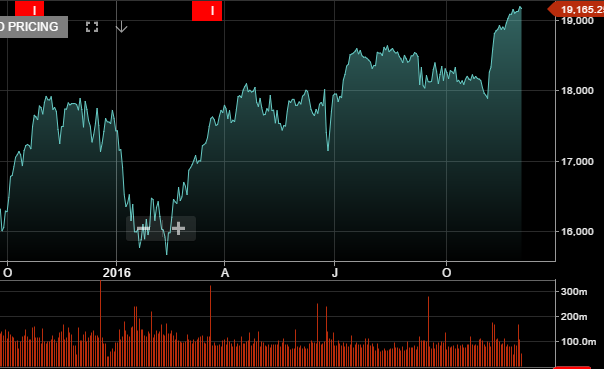
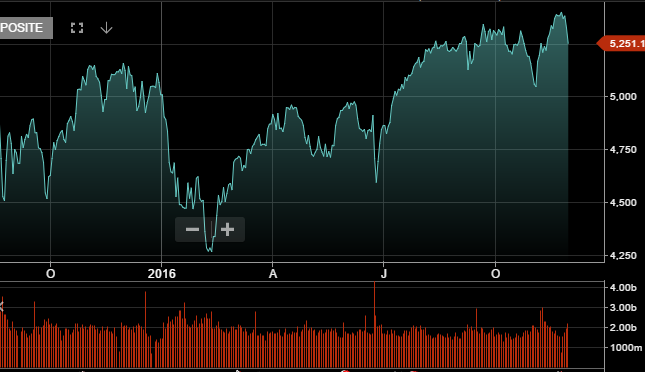
Over the last five years, one of the least important concerns for US Corporate Treasurers has been the forward cost of funding. However, over the last two months, the sharp rise across the US Treasury curve has exposed some notable differences in how banks perform versus technology companies perform in a rising interest rate environment.
Since October 1st, the yield on the US 10-year note has surged close to 90 basis points from 1.55% to 2.44%. This is nearly a 60% increase and has helped US banking stocks, while hurting some big technology names.
For example, Since October 1st, shares of J.P.Morgan have climbed over 20% from $67.00 per share to over $81.00 per share. During that same period of time, shares of Facebook have dropped from $133.00 per share to just under $115.00 per share; a 13.5% drop.

Australian consumers borrowed less in the month of October with RBA data showing private credit growth at 0.5% (5.3% year on year) versus a YoY rate of 5.4% last month. A closer look at the data suggests Australians are interested in buying real estate and not much else. Even though housing credit growth was flat last month at 6.4%, the pace is still well above the 4.4% growth in Business credit and the rate of Personal credit; which actually dropped to -1.1% Year on year. It’s likely that the growth in housing credit has been supported by the RBA’s rate cuts in May and August. However, the RBA won’t miss the fact that lending over the last 12 months has a flat to lower trajectory, which may influence their policy directives going forward.
Australian banks continue to push up against the top end of the their price channels. We’re mindful of the rally in US banks helping to boost investor sentiment towards the sector, yet there is limited evidence domestically of any pickup in earnings on the horizon.
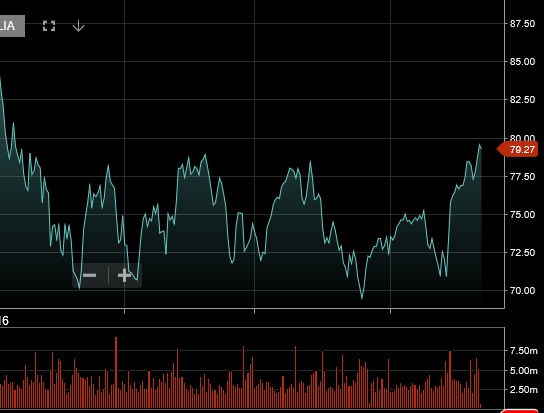
Over the last three weeks, the USD has gained more than 6% versus the Japanese Yen, nearly 4% against the Euro and USD Index has reached its highest level in over 13 years at 102.10. Further, the US SP 500 and Dow Jones 30 both pushed into new record territory. But the strong surge in the Greenback and US Stocks met resistance last Friday with the G-7 pairs closing well away from the best levels on the session. This pullback has FX strategists wondering if the US equity run is over and it’s time to sell the US Dollar.
Statistically, there is no question that the US Dollar has gotten ahead of reality and a correction of some degree is reasonable. However, it’s important to recognize that the sharp rally in the USD and US Stocks, along with surge in US Bond yields has been driven by 3 fundamental factors: position adjustments to USD and US rates, the prospects of an aggressive fiscal program from the new US administration and the expected impact of higher US inflation.
Along this line of thinking, the US FED FUNDS futures have fully priced in an adjustment higher in the FED Funds target next month to .75% and nearly a 40% chance of another 25 basis point hike by May of 2017. With the second rate hike not expected until the middle of next year, the USD and US Stocks could take another leg higher if the FOMC statement suggests that further rate normalization could come sooner.
This means that the USD correction could be swift and unbalanced across the G-7 pairs. For example, a large percentage of the USD/JPY rally has been driven by US yield spreads gaining against Japanese Government bonds. This is not the case for the sell off in the AUD and the EURO. The Euro faces a list of political and economic troubles which should keep the pair under pressure going into the end of the year. Which brings us to the Sterling; which has firmed against the USD over the last few sessions.
The GBP/USD looks to be setting up for a breakout after consolidating over the last week. The big story driving the Sterling last week was UK Chancellor Hammond’s comments about the budget. While Mr Hammond lowered his growth forecasts for the next two years, he promised more borrowing and investment into innovation and infrastructure. He also announced a new National Productivity Investment fund of £23 billion and plans to double UK export finance to make it easier for British businesses to export.
These new spending plans were not expected which pushed the EUR/GBP sharply lower and lifted the FTSE 100 to its highest close in two weeks. With respect to Brexit politics, Prime Minister May repeated her plans to trigger article 50 by march of 2017 and exit the European Union by March of 2019. As such, we believe that the Sterling will outperform the Euro, USD and the other G-7 currencies over the near-term as the USD and US Stocks correct lower.
The European Central Bank (ECB) meets on December 8th and they are widely expected to extend their asset purchases, as well as, modify their bond qualifications to expand the supply of eligible securities. With the Italian referendum scheduled for December 4th, it’s becoming very clear that the ECB’s stimulus program, and how it evolves, is changing from an economic strategy to a political necessity.
On the other side of the Atlantic, the SP 500 Index has traded sharply higher over the last two weeks. The Index has jumped to a new all-time high of 2207.00. The new administration’s commitment to tax reform, fiscal stimulus and repealing the Dodd-Frank legislation has drawn investment capital from both domestic and overseas investors.
Taking into account the Non-farm payroll data next week, followed by the ECB meeting the following week and then the FOMC meeting, we’ll be monitoring closely the momentum signals in the major global equity indices.
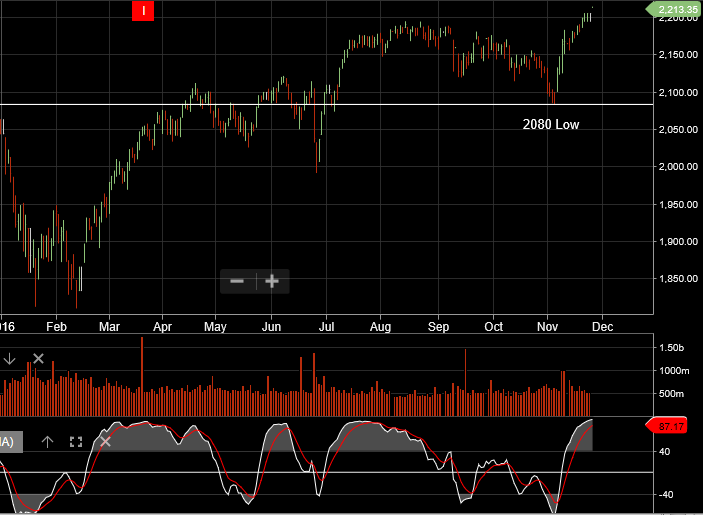
Or start a free thirty day trial for our full service, which includes our ASX Research.